Learn to play an A minor scale on guitar
Let’s learn an A minor scale on guitar. The minor scale is a bit different from the Major scale, so first let’s walk through the formula for the minor scale.
Minor Scale Formula
First, let’s review the Major scale formula. It consists of a series of whole and half steps. Remember that a half step (or semitone) on the guitar is just the distance between one fret and another. A whole step consists of two frets’ distance. And every major scale uses the same combination of whole and half steps, like this:
Whole step –> Whole step –> Half Step –> Whole Step –> Whole Step –> Whole Step –> Half Step
A minor scale simply places these whole and half steps in different places. The minor scale formula looks like this:
Whole step –> Half Step –> Whole Step –> Whole Step –> Half Step –> Whole Step –> Whole Step
A minor Note Names
Here are the note names in the A minor scale:
A – B – C – D – E – F – G
Key Signature
A minor has no flats or sharps in the key signature, so all of the notes are natural. Thus, on the piano, you can play an A minor scale by starting on A and playing successive white keys.
One-octave A minor guitar scale in first position
We’ll start off with a simple A minor scale in first position. The first note is the open fifth string, but before you start, get your left-hand second finger ready to play the B that comes next. Just have that finger hovering over the second fret. This will make that transition from the first to the second notes much smoother.

Two-octave A minor scale
The two-octave A minor scale is very similar to the one octave, but it has a big stretch on the first string to reach the A on the fifth fret. To make this stretch we need to use what is known as an extension. Essentially we use the first finger on the F to push our hand up into second position temporarily. That allows us to play the G and the A with the 2 and the 4 and then we shift back into first extension by stretching back to the 1 on the F again.
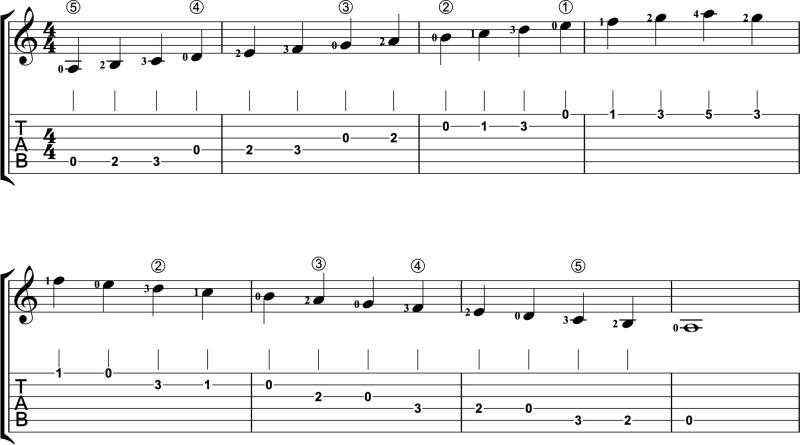
Before we look at a three-octave A minor scale, let’s look at two other popular minor scales: the harmonic and melodic minor.
A harmonic minor scale
The harmonic minor scale is almost exactly like the other minor scale we just looked at — what is typically called the “natural minor” scale — but with one difference. The seventh note or scale degree, what we call the “leading tone” in music theory, is raised by one half step. The seventh note in A minor is G. So if we raise that one half step we get G#. So every G in the A harmonic minor scale will be a G#, like this:
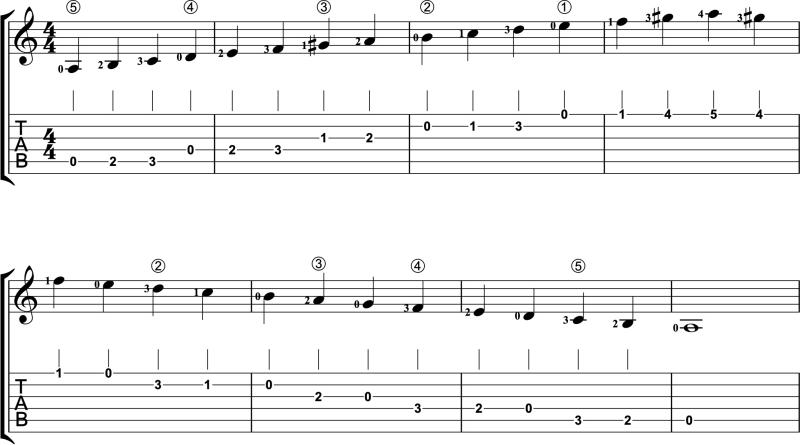
A melodic minor scale
The melodic minor scale is pretty unique because it’s different ascending (going up the scale) from descending (going down). It’s similar to the harmonic minor with, again, just one difference.
In addition to raising the seventh scale degree like in the harmonic minor, the melodic minor scale also raises the sixth scale degree one half step. The sixth note or scale degree in A minor is F, so all F’s will now be F# in melodic minor. However, these two notes are only raised when ascending. When you come back down the scale, both the seventh and sixth scale degrees become natural again, hence the natural signs. This scale looks like this:
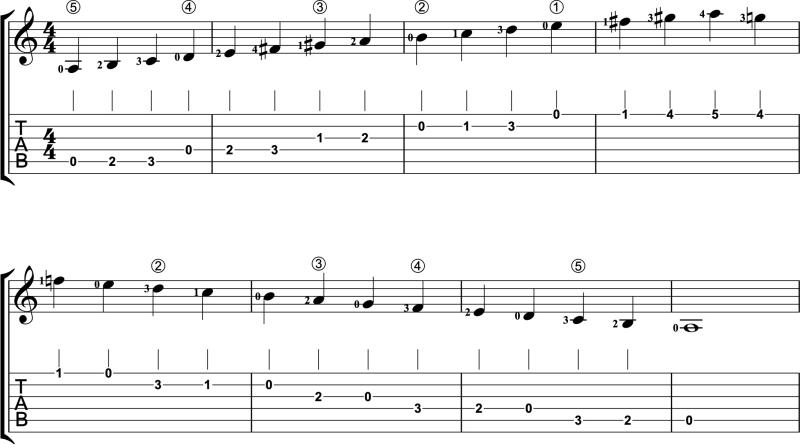
Three-octave A minor scale
The three-octave A minor scale is an advanced scale that takes us very high on the fingerboard, up to the 17th fret. There are also several shifts throughout and we start in fifth position. If fifth position is new to you, use the TAB to find the correct fret positions. The example below shows a three-octave A harmonic minor scale.
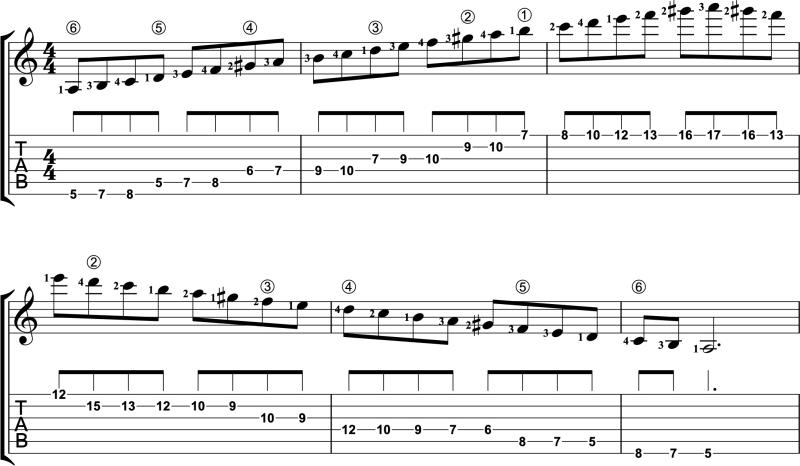
The A minor guitar scale in repertoire
A minor is a very guitar-friendly key, so it appears in guitar music all over the place. Here are some great examples of the A minor scale and arpeggios in guitar repertoire:
“Allegro,” from Le Papillon, Op.50 No.13, by Mauro Giuliani
“Españoleta” by Gaspar Sanz
“Maria Luisa” by Julio Sagreras
***
We hope you’ve enjoyed learning the A minor scale! Want to learn more scales?
- Check out our Scales Resources page.
- Get started with how to play a C Major scale on guitar.
- Download a FREE Scales Book –>

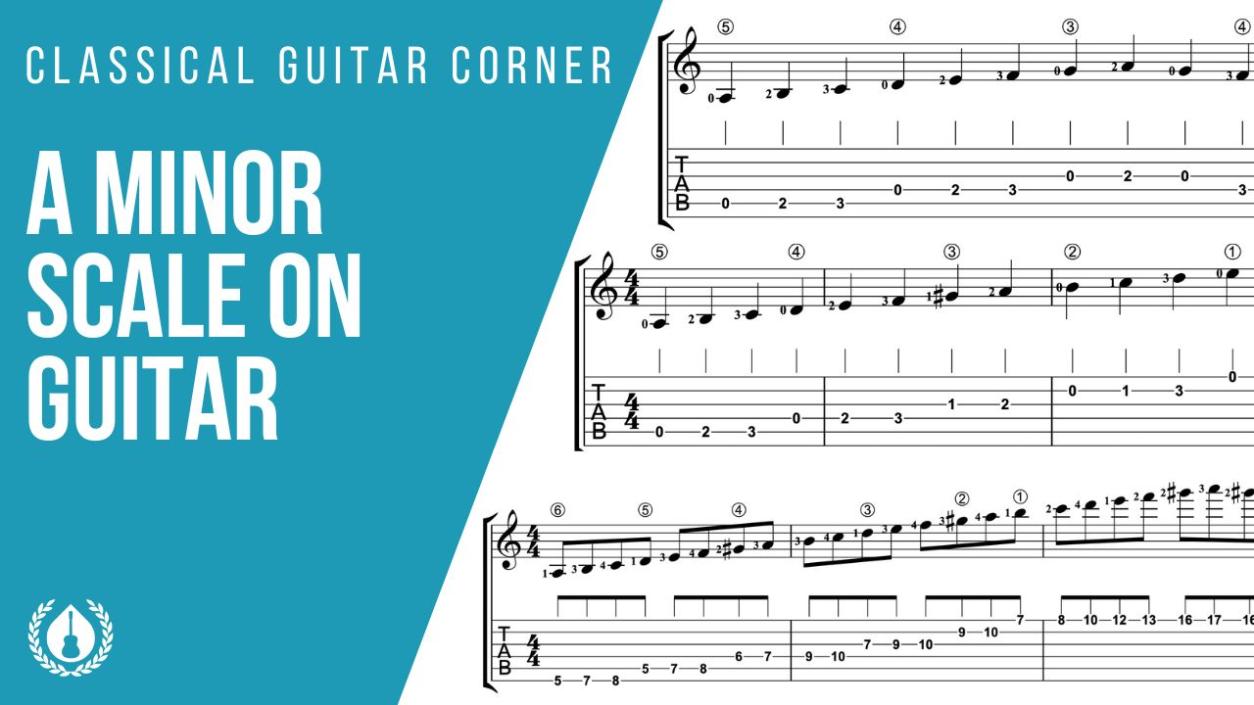
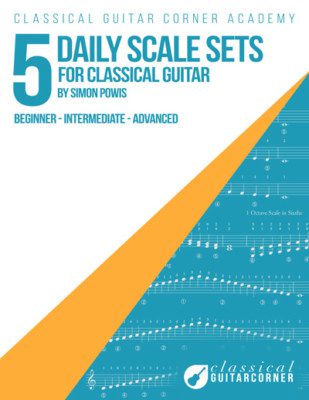
Leave A Comment